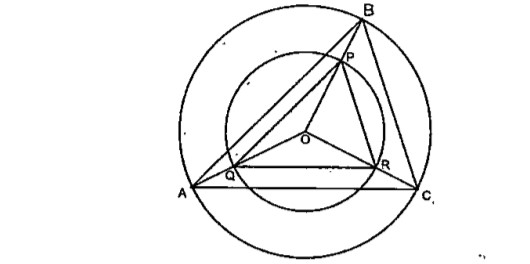The lines joining the circumcentre of a Wangle to the vertices are extended to meet another circle with the same centre, and these points are joined to make another triangle.
Prove that the two triangles are similar.
 .Solution in Malayalam
.Solution in Malayalam
Step by step video & image solution for The lines joining the circumcentre of a Wangle to the vertices are extended to meet another circle with the same centre, and these points are joined to make another triangle. Prove that the two triangles are similar. . by Maths experts to help you in doubts & scoring excellent marks in Class 9 exams.
Topper's Solved these Questions
Similar Questions
Draw a line of length 8 cm divide it in the ratio 2:1
01:37View SolutionHow many lines of symmetry does the above figure have ?
06:07View SolutionWhich of the following are correct chain isomers of butane ? (i)
02:11View SolutionDetermine the point of symmetry of a regular hexagon.
01:31View SolutionDtermine the images of the following figure about the given line :
02:04View SolutionIn the following figure ,ABCD is a parallelogram, CB is extended to F and the line joining D and F intersect AB at E. Then prove that ΔEAD~ΔEBF
02:45View SolutionMatch the following Column A to Column B
 02:17View Solution
02:17View SolutionMatch the following Column A to Column B
 05:41View Solution
05:41View SolutionMatch the following Column A to Column B
 02:10View Solution
02:10View SolutionThe inequation represented by the graph given below is :
02:17View SolutionThe inequation that best describes the graph given below is _________
02:10View SolutionThe inequation that best describes the following graph is _________
01:59View SolutionThe equation of straight line shown in figure is :
ltimg src="https://d10lpgp6xz60nq.cloudfront.net/physics_images/ALN_PHY_R04_E01_020_Q01.png" width="80%"gt01:49View SolutionAt point P, the value of (dy)/(dx) is : ltimg src="https://d10lpgp6xz60nq.cloudfront.net/physics_images/ALN_PHY_R04_E01_025_Q01.png" width="80%"gt
01:44View SolutionAt point P, the value of (dy)/(dx) is : ltimg src="https://d10lpgp6xz60nq.cloudfront.net/physics_images/ALN_PHY_R04_E01_025_Q01.png" width="80%"gt
01:54View Solution

